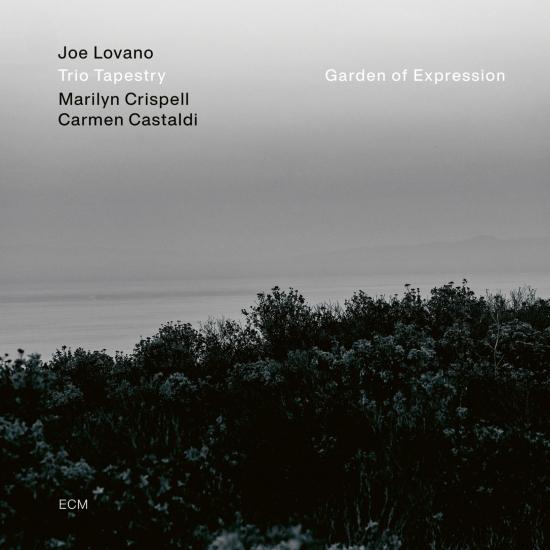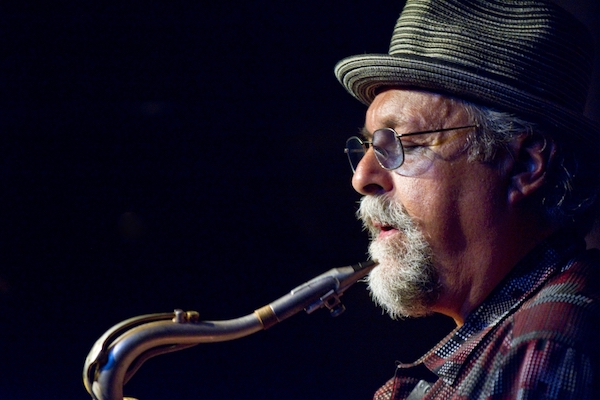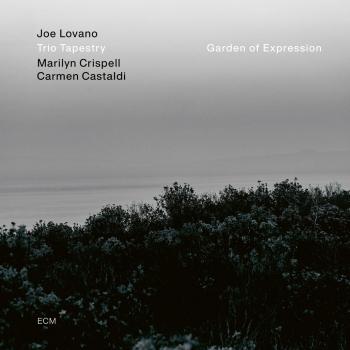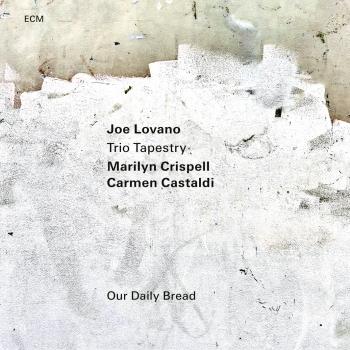
Garden of Expression Joe Lovano
Album info
Album-Release:
2021
HRA-Release:
29.01.2021
Album including Album cover Booklet (PDF)
I`m sorry!
Dear HIGHRESAUDIO Visitor,
due to territorial constraints and also different releases dates in each country you currently can`t purchase this album. We are updating our release dates twice a week. So, please feel free to check from time-to-time, if the album is available for your country.
We suggest, that you bookmark the album and use our Short List function.
Thank you for your understanding and patience.
Yours sincerely, HIGHRESAUDIO
- 1Chapel Song06:05
- 2Night Creatures06:45
- 3West of the Moon05:47
- 4Garden of Expression07:33
- 5Treasured Moments05:03
- 6Sacred Chant03:14
- 7Dream on That03:06
- 8Zen Like10:41
Info for Garden of Expression
The debut album of Joe Lovano’s Trio Tapestry was one of 2019’s most talked-about releases. The trio’s musical concept – the Boston Globe spoke of “utterances of hushed assurance, lyricism and suspense” - is taken to the next level on its second album, Garden of Expression, a recording distinguished by its intense focus. Lovano, a saxophonist whose reach extends across the history of modern jazz and beyond, plays with exceptional sensitivity in Trio Tapestry. And the music he writes for this group - tenderly melodic or declamatory, harmonically open, rhythmically free, and spiritually involving - encourages subtle and differentiated responses from his creative partners. Joe describes their interaction as “magical”. Carmen Castaldi’s space-conscious approach to drumming further refines an improvisational understanding that he and Lovano have shared since the early 1970s. The trio is also an inspired context for Marilyn Crispell’s solos, counter melodies, and improvisational embellishments, and her feeling for sound-colour helps the chamber music character of the group to flower.
The new album also benefits from the recording location, the details of the music optimally realized in Manfred Eicher’s production, made in the highly responsive acoustics of the Auditorio Stelio Molo RSI in Lugano. The trio’s second European tour in November 2019 brought them to Switzerland, and they played a concert in the Lugano studio the night before the recording began. “Having given a full performance there we were very comfortable with the room. The tone there, and the sound and the feeling in that space, built to be a recital room, is amazing. We played forte and really felt it. We played at pianissimo volume, and you heard the music vibrating in the room. And that created a real spiritual delivery on each composition, as we allowed the music to unfold.”
Joe Lovano describes the evolution of the trio as an unforced, natural process. As with Trio Tapestry’s debut album all the music on Garden of Expression was written by Joe. “Each of the pieces is a song of expression where rhythm doesn’t dictate the flow. This is not a band that starts from the beat. The momentum is in the melody and the harmonic sequence. And rhythm evolves within each piece in a very free flowing manner.” Joe draws parallels between the present trio and the music he made, over a period of 30 years, in Paul Motian’s trio with Bill Frisell. “We developed a way of playing and communicating. The pieces would change night after night, as Paul gave us permission to create the music within the music. That study, that conception, has provided a foundation in my own playing and writing up to the newest work with Trio Tapestry.”
The fresh music of Trio Tapestry draws upon a long history of friendships and collaboration. Lovano and Crispell met in the mid-1980s when Marilyn was playing with Anthony Braxton’s group. After Joe jammed with Marilyn’s trio with Paul Motian and Mark Helias at New York’s Village Vanguard they went on to play concerts as a quartet. The potential for further development was evident to both Lovano and Crispell. The association with Carmen Castaldi, meanwhile, goes back to teenage years in Cleveland. “Carmen’s one of my oldest and closest friends. We grew up together. Played in bands together, went to Berklee at the same time and shared lots of the same musical experiences.” These included the revelation of hearing Keith Jarrett’s band with Dewey Redman, Charlie Haden and Paul Motian at the Jazz Workshop in Boston in 1972, a powerful, formative influence for both musicians. “Being in the room with that quartet opened up a lot of doors for us, gave us confidence in creative music.”
When Lovano, Marilyn Crispell and Carmen Castaldi finally came together as a trio they played totally improvised music: “Our very first concert was without any themes or songs. It was about exploring how we might play together – and the music opened up in such a beautiful way. I sent a tape of this to Manfred Eicher, who was very encouraging.” Joe then set about writing a programme of music to follow up the implications of those improvisations, shaping pieces that might best display the unique qualities of this combination with its “peaceful, non-aggressive delivery”, while also refining a technique he had first broached on his album Tones, Shapes and Colors, playing saxophone and gongs simultaneously. The slowly blossoming resonance of the gongs has become one of the signature sounds of the trio, with overtones shading into silence. “These two recordings – Trio Tapestry and Garden of Expression - are the only the albums I’m on that include real moments of silence from the whole group.” There is a lot of deep listening here. It is also possible to hear Garden of Expression as a non-denominational spiritual album, starting out with the quiet “Chapel Song” which reflects upon Joe’s experience in a Viennese church, listening to the distant strains of an organ. It progresses through “Sacred Chant” which has some of the yearning quality of a Coltrane ballad, before concluding with “Zen Like , where the gongs summon the trio to concentrated meditation.
There are also secular influences at work. Lovano spent the summer of 2019 on tour with Diana Krall, and “West of the Moon” here is a response to playing “East of the Sun” night after night with the singer. “It doesn’t sound anything like ‘East of the Sun’”, Joe stresses, “but that was the inspiration. A lot of these new pieces, in fact, were written on the road…”
Between the first and second Trio Tapestry albums a steady artistic growth can be charted. For Lovano “Seeds of Change” was a key piece on the debut, in terms of the approach taken by the trio, and the open form itself, at once a blues, a ballad, a chamber music composition. With “a feel and a flow that was special”, it led directly to the title piece of Garden of Expression, the seeds having taken root. “Between the two albums we have an amazing repertoire now.”
Joe Lovano, tenor and soprano saxophones, tarogato, gongs
Marilyn Crispell, piano
Carmen Castaldi, drums

Joe Lovano
is a Grammy-winning saxophonist, composer, and arranger. Down Beat magazine has twice named him Jazz Artist of the Year, and he scored a prestigious trifecta in 1998: nominations for Musician of the Year, Improviser of the Year, and Best Tenor Saxophonist in the New York Jazz Awards. He also topped both the Down Beat readers and critics polls as Tenor Player of the Year in 2000. Lovano attended Berklee in the early 1970s and received an honorary doctor of music degree from the college in 1998. In the fall of 2001 he began a prestigious teaching residency in the Berklee Ensemble Department, known as the Gary Burton Chair in Jazz Performance. Since joining the Berklee faculty, the Blue Note artist has several albums as a leader and appeared on dozens of other recordings. He is also a faculty member in the Berklee Global Jazz Institute. Lovano has collaborated with many legendary musicians, including McCoy Tyner, Hank Jones, Joshua Redman, Bill Frisell, Branford Marsalis, Jim Hall, and Paul Motian.













